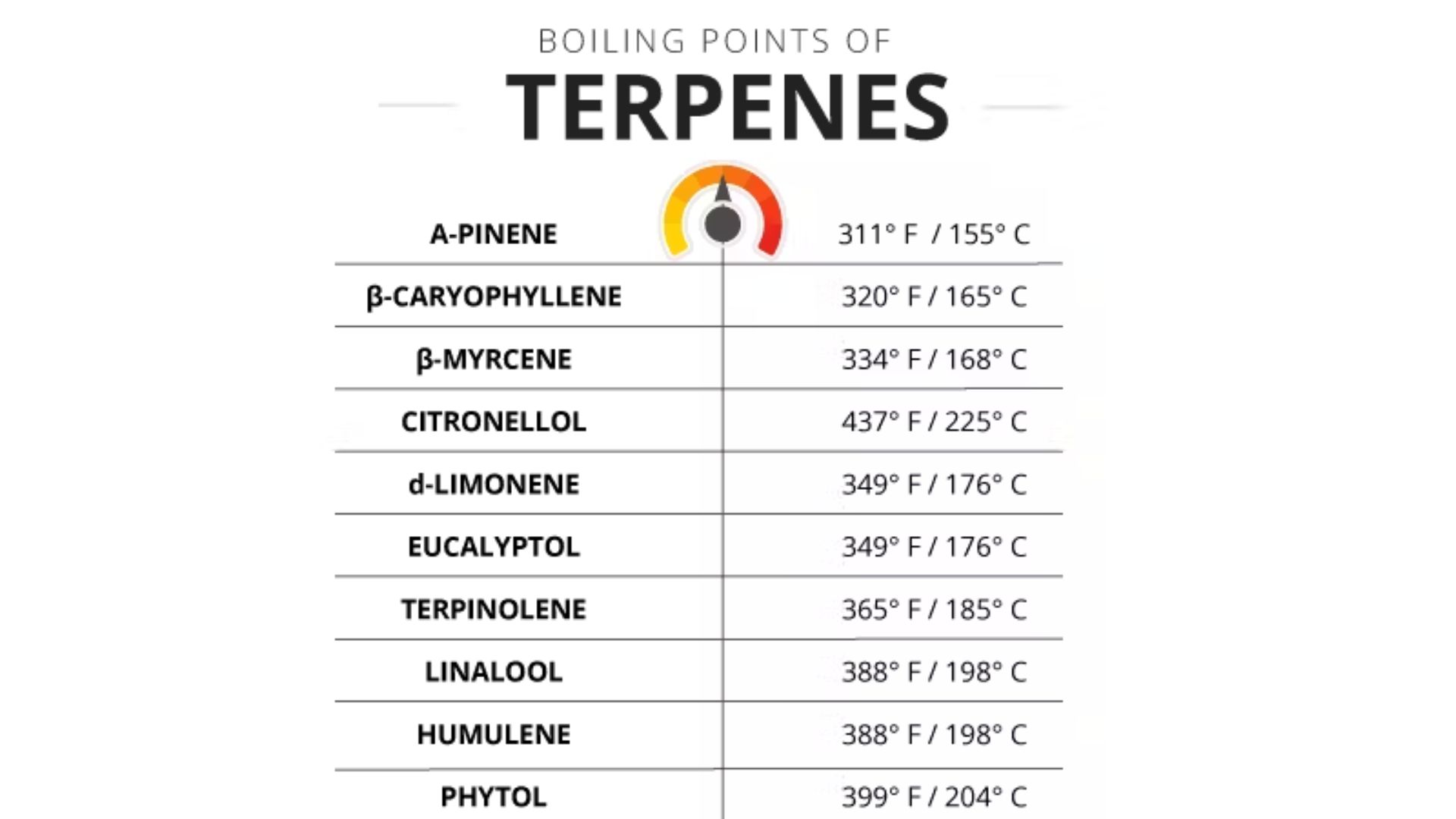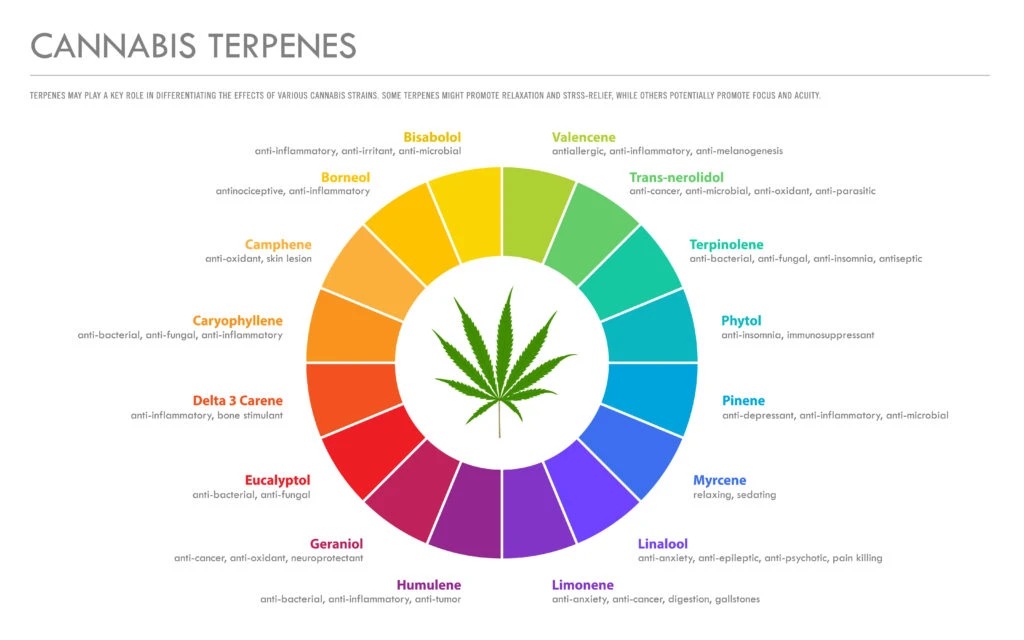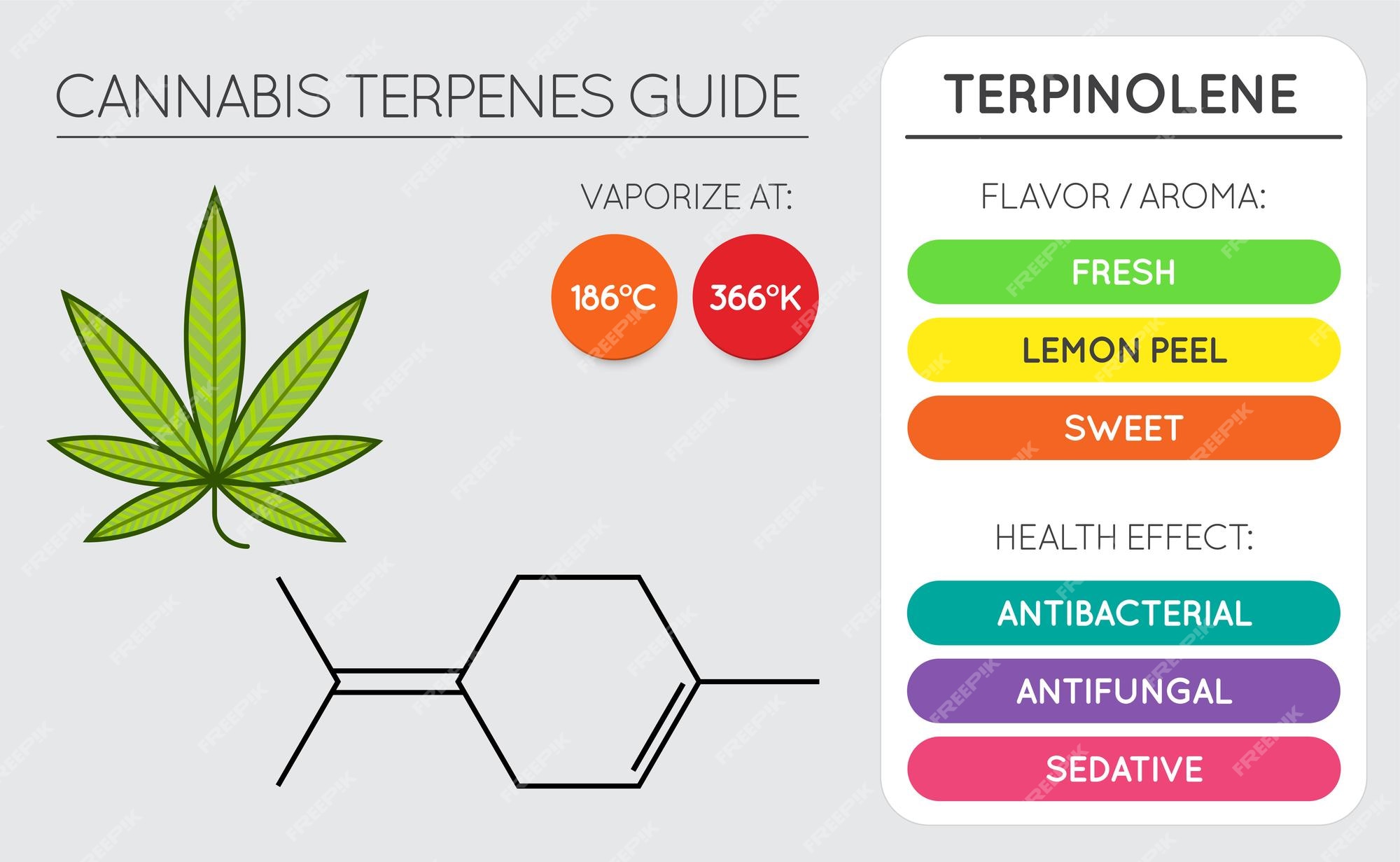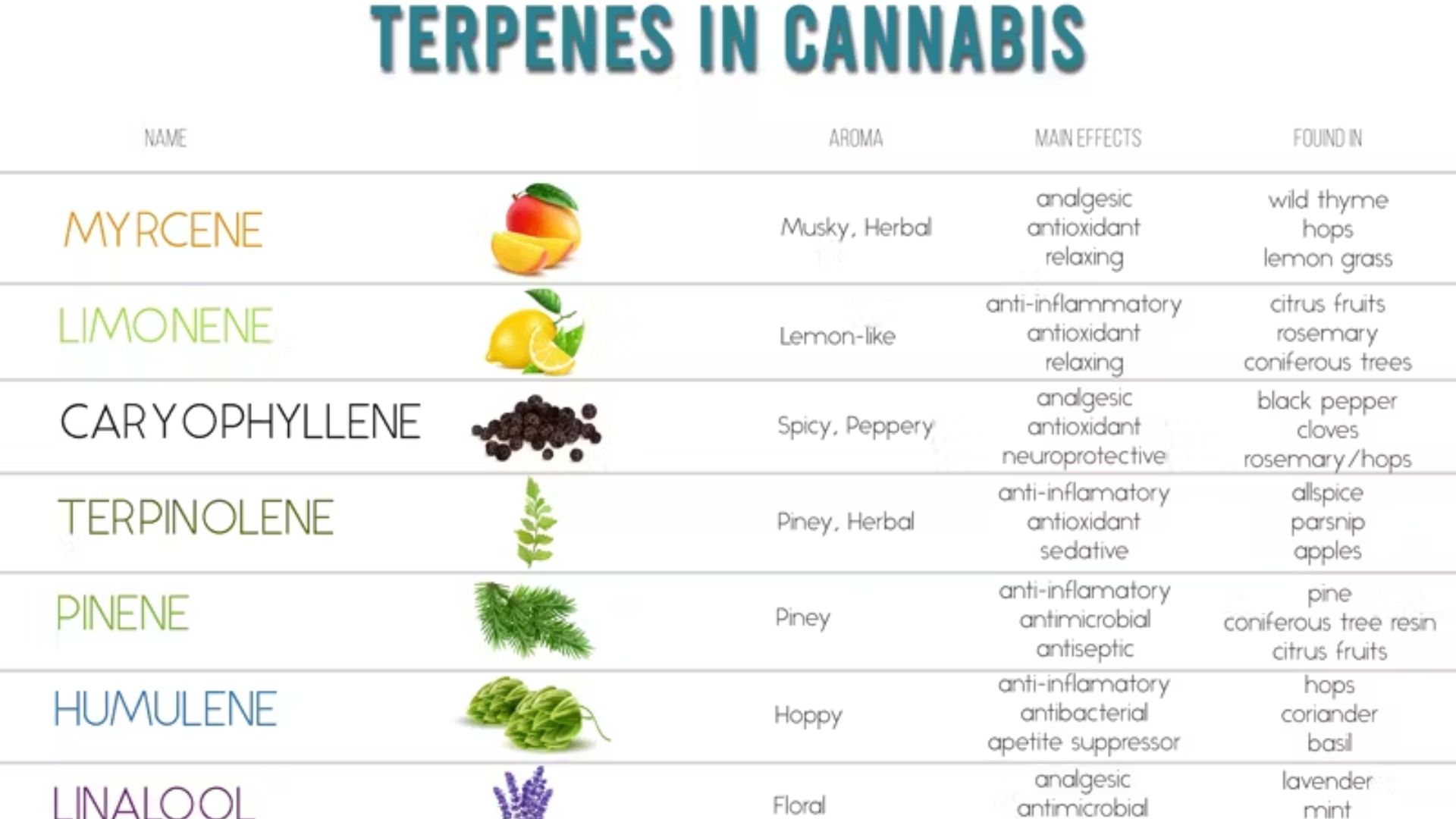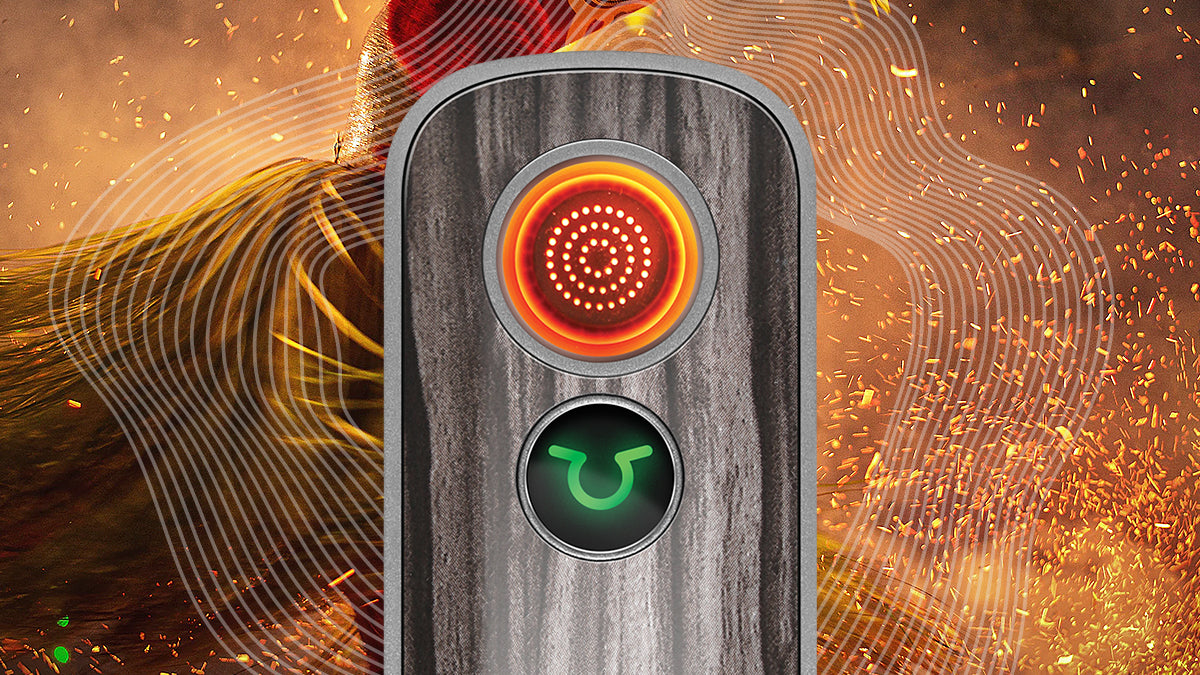List Of 8 Terpene Vaporization Temperatures And Misconceptions About Their Boiling Points
When it comes to vaporizing terpenes, understanding their unique terpene vaporization temperatures is key to enhancing your experience.
Author:Suleman ShahReviewer:Han JuDec 18, 20233.2K Shares51K Views
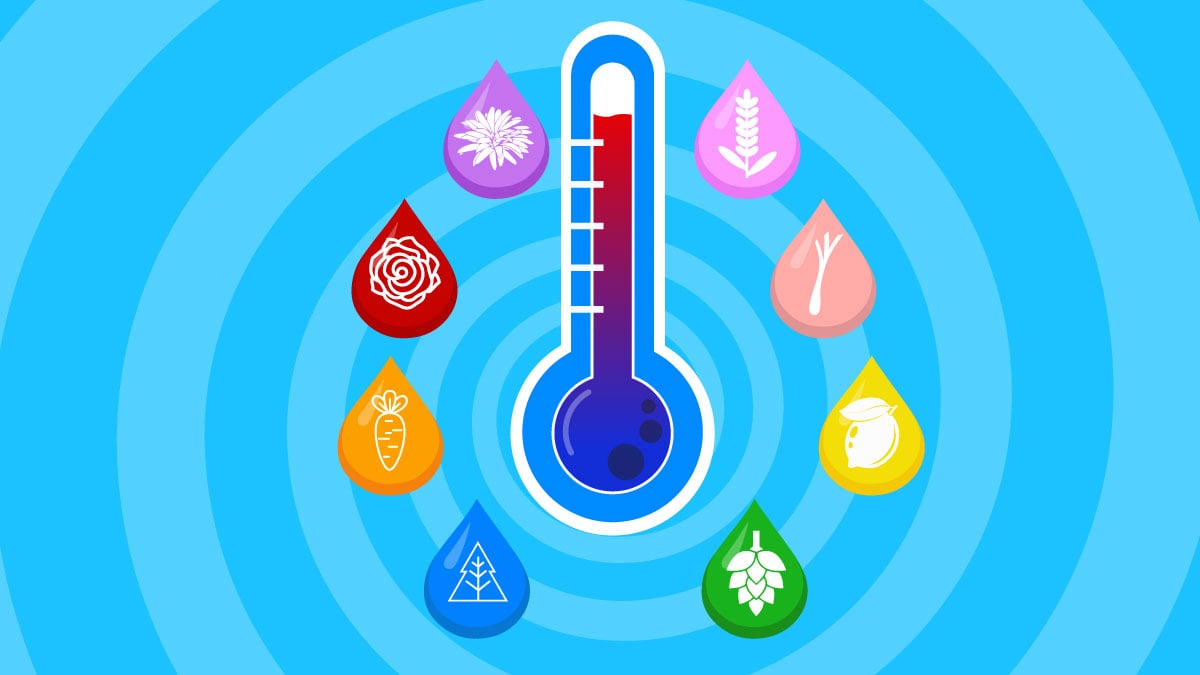
Every cannabis strain has a different combination of terpenes and cannabinoids that respond to different temperatures. One of the many benefits of terpenes is that you can adjust them to meet your requirements and interests.
Some even blend various terpenes to benefit from the "entourage effect," which is the result of their combined benefits. Several studies have demonstrated the potential healthadvantages of terpenes, including their ability to reduce stress and lift people's spirits.
An excellent technique to get the most out of these aromatic chemicals is to consume them at specified temperatures. They smell and work better, typically, when the heat is set correctly.
However, the incorrect heat rapidly evaporates them and even damages their chemical structures. It's crucial to become familiar with the Terpene vaporization temperaturesbecause they are highly heat-sensitive and can destroy your combinations.
What Are Terpenes?
Terpenes are those marvelously complex and delicate aromatics that cannabis and other plants make to ward off pests, attract pollinators, and communicate with other plants. Cannabis and other plants manufacture terpenes to accomplish all of these goals. Terpenes may be found in a wide variety of plant species.
They have been put to use by humans for millennia in a variety of products, including fragrances, incense, oils, and medical preparations. The majority of the terpenes that can be found in cannabis are both extraordinarily volatile and quite fragile. This means that they readily evaporate and that they may be chemically changed or destroyed by temperatures that are too high.
Vaporization And Medical Cannabis
Vaporization is a well-liked and more widely accepted way to consume medicinal cannabis because it allows for exact temperature control, which might affect the plant's therapeutic effects. It is essential to investigate the physical characteristics and chemical makeup of the plant's active pharmaceutical ingredients (APIs) in order to comprehend vaporization and its use in medicinal cannabis.
Many active ingredients (APIs) are found in medical cannabis, namely terpenes and cannabinoids, both of which have unique medicinal qualities. THC and CBD, among many other cannabinoids, are essential for treating a wide range of illnesses, from epilepsy to chronic pain.
In addition to adding to the unique scent, terpenes may also offer other health advantages. Patients may customize their cannabis experience by adjusting the temperature at which these chemicals evaporate.
Furthermore, the flavor, fragrance, and potency of the finished product are impacted by compositional changes associated with evaporation that start as early as the drying and curing procedures. Nevertheless, decarboxylation, a crucial stage in the use of medical cannabis, causes significant compositional alterations.
By removing a carboxyl group from cannabis, a process known as decarboxylation converts non-psychoactive THCA into psychoactive THC and increases the medicinal potential of the plant. Therefore, for medical cannabis users looking for targeted and reliable therapeutic benefits, comprehending these temperature-related composition variations is essential.
How To Target Terpenes While Vaporizing
You will need a vaporizer with an adjustable temperature control if you want to evaporate some substances more than others. Remember that adjusting the temperature at which you vaporize might lessen the quantity of active THC, CBD, and other cannabinoids.
It is crucial to examine the boiling points of the other key plant components and determine which are most similar to the terpene you are aiming for. The boiling point of CBD is 180°C, whereas that of THC is 157°C. Furthermore, it's critical to understand that substances will both start to evaporate at temperatures below and above their respective boiling points.
It is hard to concentrate on vaporizing a single ingredient in cannabis due to its diverse spectrum of chemicals and vaporization points. In light of the entourage effect—a term used to describe the synergistic interaction between terpenes and cannabinoids—this may not always be a bad thing.
This kind of temperature manipulation in vapes is definitely going to have more of an influence on flavor than on effects, which are generally going to be mild.
Whatever the case, the temperature at which you vaporize your cannabis will undoubtedly change both its scent and its perceived flavor. It's also crucial to remember that your assumptions and ideas regarding the effects of terpenes may be the cause of some of the symptoms you encounter.
Common Misconceptions About Boiling Points
Regarding terpenes and the importance of boiling point temperatures, there are a lot of myths. There's a widespread misconception that you can precisely target a specific terpene or cannabinoid by setting your vaporizer to a particular temperature.
Comparably, many suggest you only obtain a little of a compound if the temperature is below a certain boiling point. Conversely, you will obtain all of that molecule if you raise the temperature far over the boiling point right away.
Since the aromas of a dank terpy bud remain pleasant even at room temperature, it is evident that terpenes evaporate at lower temperatures, just like perfume does. Vaporization occurs not just at certain temperatures but also throughout a broad range of temperatures.
In order to prevent terpene and cannabinoid losses during curing and processing, growers and extractors attempt to maintain low temperatures. This is because many terpenes become incredibly volatile over 70°F.
Common Terpene Vaporization Temperatures
Heat-treating terpenes over their vaporization temperature renders them ineffective, no matter how many you use. Continue reading to find out more about the Terpene vaporization temperatures and the advantages of combining and heating terpenes.
Pinene
At 155°C to 156°C (311°F to 312°F), it vaporizes. Its name, Pinene, suggests that it smells like pine trees. The forest is complete with this terpene; pine needles, parsley, rosemary, basil, and even orange peels contain it. It's one of the most widely available terpene compounds due to its abundance.
Pinene has several advantages for users, as terpene lovers are aware. Research indicates that it may offer a variety of mental and cognitive advantages, particularly for people with anxietyand sleeplessness.
One possible advantage is that it can aid in user relaxation and calmness, which is excellent for anxious people.
Linalool
At 198°C (388.4°F), it vaporizes. If you've ever been to a spa, sauna, or other therapeutic facility, linalool is probably familiar to you. Because it is so calming, a lot of leisure centers employ this terpene, which many have found to be effective in managing pain and inflammationas well as anxiety.
Furthermore, as per a study, it possesses antibacterial qualities that may aid in inhibiting the growth of pathogens within your body. Linalool is found naturally in birch bark, lavender, flowers, and other spice plants.
Myrcene
Myrcene vaporizes at 166–168°C (330.8–334.4°F). Most commercially available strains of myrcene have an earthy, sweet scent that is easily recognizable. It is well known for having antioxidant and maybe anti-inflammatory properties, as one research notes. However, it is not limited to that.
The calming and relaxing properties of myrcene make it a popular choice among enthusiasts. With these added advantages, it could be a fantastic terpene to utilize if you have anxiety or sleeplessness.
Limonene
Limonene vaporizes at 177°C (350.6°F). Lovers usually obtain limonene from citrus fruits like oranges and lemons. But this spicy terpene is also present in spices like rosemary, ginger, and chamomile. Because it helps improve one's mood and general well-being, limonene is well known. These outcomes could also imply that it helps lessen worry and tension.
In addition to its psychological and emotional advantages, research on mice has revealed that it may also lessen gastrointestinal issues like ulcers and enhance heart health.
Beta-Caryophyllene (Bcp)
Black pepper, cinnamon, clove oil, rosemary, and hops all contain beta-caryophyllene (BCP), a fragrant terpene with a vaporization point of 119°C (246.2°F). Because of its distinct molecular makeup, it can interact with the body's endocannabinoid system (ECS) and perhaps have therapeutic effects.
Research indicates that BCP's ECS compatibility may be helpful for those with illnesses like schizophrenia and depression. BCP is also recognized for its capacity to promote kidney, liver, and brain function.
Humulene
At 125°C (257°F), humulene vaporizes and has a unique, woodsy, spicy perfume that is similar to ginseng and ginger. This terpene is present in a number of spices and herbs, such as sage, black pepper, coriander, and basil, as well as in hops, which are an essential component of beer.
The potential of humulene to suppress tumor development and maybe trigger cancer cell death has been demonstrated by recent studies. Research suggests that it could prevent tumor growth in test subjects, providing hope for the treatment of cancer.
Eucalyptol
Eucalyptol, which vaporizes at 175°C (348°F), is mainly found in eucalyptus trees; however, it can also be found in citrus, laurel, and rosemary plants. Eucalyptol, well-known for its somewhat spicy flavor and minty scent, has gained recognition for its antimicrobial qualities.
Studies have demonstrated its capacity to suppress the development of particular bacteria, such as S. aureus and E. coli, which makes it an advantageous substance for possible medical and cosmetic uses. Additionally, eucalyptol improves topical product absorption, which may boost the potency of oils and lotions.
Para-Cymene
Para-cymene vaporizes at 177°C (350.6°F). It is found in many food plants, including grapefruit, orange juice, tangerines, and carrots. It adds to the citrusy, earthy, and woody aromatic characteristics of these plants.
According to recent research, para-cymene may have antioxidant qualities that help shield people from the damaging effects of free radicals and enhance general health and well-being.
Finding The Right Temperature For Vaping
Do you still need to figure out the ideal temperature for your vaporizer? Finding the configuration that suits you the best might be challenging. Starting in the 350–400° F (177–204° C) range and gradually moving up or down by 5–10° (or 1–2° C) at a time is the ideal technique for doing experiments. After some trial and error, you will finally determine the ideal temperature for you.
- The majority of the heat will be squandered on drying out your buds if your cannabis is too wet. When using dried herbs, vaporizers often function considerably better and generate more vapor. Grinding your cannabis first will expedite the process of letting it air out for a few hours or even overnight.
- Concentrates may now be vaporized using contemporary vaporizers. Generally speaking, higher temperatures are preferable for dabs and CBD extracts than for dried marijuana. Less heat equals better flavor, which is the basic rule that still holds. On the other hand, excessive heat will cause you to lose taste and vital terpenes.
- Higher temperatures are more suitable for nighttime and late-night sessions, while lower temperatures are more suited for usage in the morning and during the day.
- Lower temperatures often enhance flavor, whereas higher temperatures have the highest inebriating effects. Anything below 315° F (157° C), which is around the boiling point of THC, will have no euphoric effects.
- You should be aware that CBD tends to boil at a slightly higher temperature than THC when utilizing hemp or cannabidiol-rich cannabis strains for medical purposes.
- The general rule is to vape 10° F (or 1° C) hotter than the average boiling point of the desired cannabinoids and terpenes; however, keep in mind that this might vary somewhat depending on the strain or device.
- Save your previously vaped bud if you're vapingin the lower temperature range. Even if it's pale brown or green, it most likely still has beneficial cannabinoids. Additionally, it is now decarboxylated, which only indicates that it is primed and prepared for use in tea or other consumables.
Convection Based Vaporizer
A pure convection-based vaporizer is the best tool for savoring the intricacies and nuances of a well-grown, high-terpene strain. The required components in the plant are evaporated by the hot air delivered by these devices.
In most cases, conduction-based vaporizers use "ovens" made of heated metal or ceramic that have the potential to overheat the herb when it comes into contact with the walls. The delicate chemicals may be altered by this high, targeted heat, giving the food an undesirable "burnt popcorn" flavor.
Elevating the temperature of your vaporizer will alter the rate at which each of the constituents in the combination evaporates, but this will only sometimes result in an increased concentration of any one terpene, at least not in a straightforward manner. On the other hand, you may change the total combination of terps and cannabinoids you get from each puff by adjusting the temperature setting.
Flower Vaporization
Vaporizing dried cannabis flowers or other plants is akin to the analogy of a damp towel rather than a boiling kettle of water. The tiny plant cellulose threads all work together to create a solid-wicking matrix that the cannabinoids and essential oilsmay pass through.
Trichomes melt when heated air or hot chamber walls come into touch with them, spreading a variety of plant oils and lipids along the fibers to increase the fluid's exposed surface area, where they quickly evaporate. There is only enough liquid for primary boiling to happen if it's extremely little.
Therefore, fast evaporation rather than boiling is a more realistic and practical method to conceptualize the vaporization of dried herbs. That isn't the case with a dab or a vape cart, though.
Health And Safety Concerns About Terpene Vaporization
The most important considerations when it comes to terpene vaporization are health and safety. These worries include a number of essential details that consumers need to be aware of in order to guarantee a fun and safe experience.
The possibility of overheating and combustion is one major worry. Terpenes and other chemicals have the potential to burn and release toxic byproducts when vaporization temperatures are higher than advised. This can cause health problems by introducing irritants and pollutants into the respiratory system, in addition to lowering the quality of the vapor.
Moreover, exposure to extremely high temperatures might cause the release of toxic chemicals from terpenes. Terpenes and other elements can break down to generate unintended consequences that could be harmful to your health. It emphasizes how crucial it is to comprehend and manage vaporization temperatures.
Users should follow a set of guidelines for safe vaporization in order to decrease these worries and encourage a safer vaping experience. This entails employing vaporization devices of the highest caliber, keeping the setup tidy and functional, and choosing the proper temperature range for the terpenes being ingested.
Vaporization device upkeep and cleaning are also essential. The buildup of residues from past sessions in the device can change the flavor and safety of the vapor. The vaporizer's lifespan may be increased, and these problems can be avoided with frequent cleaning and maintenance.
Terpene Vaporization Temperatures - FAQs
When Do Terpenes Start To Evaporate?
While most terpenes start to break down at about 100°F, others will start to evaporate at as low as 70°F.
How Quickly Do Terpenes Disappear?
Terpenes rapidly evaporate when cannabis is left unprotected in containers, on the shelf, or in distribution. Furthermore, the absence of terpenes is irreversible.
At What Temperature Does Terpene Caryophyllene Evaporate?
The boiling point of caryophyllene is 266°F. One of the few terpenes that binds to endocannabinoid receptors directly is this one.
Conclusion
Your experience with terpene products can be significantly influenced by heat. Since you may want to play with the different temperatures and mixtures of terpenes, it's best to know how much you can heat a terpene before you lose its valuable taste, smell, and effects.
When users know the Terpene vaporization temperatures, they can make better decisions that fit their tastes and desired effects. To get all the tastes and benefits while lowering the risk to your health, this is the way to go.
Jump to
What Are Terpenes?
Vaporization And Medical Cannabis
How To Target Terpenes While Vaporizing
Common Misconceptions About Boiling Points
Common Terpene Vaporization Temperatures
Finding The Right Temperature For Vaping
Convection Based Vaporizer
Flower Vaporization
Health And Safety Concerns About Terpene Vaporization
Terpene Vaporization Temperatures - FAQs
Conclusion

Suleman Shah
Author
Suleman Shah is a researcher and freelance writer. As a researcher, he has worked with MNS University of Agriculture, Multan (Pakistan) and Texas A & M University (USA). He regularly writes science articles and blogs for science news website immersse.com and open access publishers OA Publishing London and Scientific Times. He loves to keep himself updated on scientific developments and convert these developments into everyday language to update the readers about the developments in the scientific era. His primary research focus is Plant sciences, and he contributed to this field by publishing his research in scientific journals and presenting his work at many Conferences.
Shah graduated from the University of Agriculture Faisalabad (Pakistan) and started his professional carrier with Jaffer Agro Services and later with the Agriculture Department of the Government of Pakistan. His research interest compelled and attracted him to proceed with his carrier in Plant sciences research. So, he started his Ph.D. in Soil Science at MNS University of Agriculture Multan (Pakistan). Later, he started working as a visiting scholar with Texas A&M University (USA).
Shah’s experience with big Open Excess publishers like Springers, Frontiers, MDPI, etc., testified to his belief in Open Access as a barrier-removing mechanism between researchers and the readers of their research. Shah believes that Open Access is revolutionizing the publication process and benefitting research in all fields.

Han Ju
Reviewer
Hello! I'm Han Ju, the heart behind World Wide Journals. My life is a unique tapestry woven from the threads of news, spirituality, and science, enriched by melodies from my guitar. Raised amidst tales of the ancient and the arcane, I developed a keen eye for the stories that truly matter. Through my work, I seek to bridge the seen with the unseen, marrying the rigor of science with the depth of spirituality.
Each article at World Wide Journals is a piece of this ongoing quest, blending analysis with personal reflection. Whether exploring quantum frontiers or strumming chords under the stars, my aim is to inspire and provoke thought, inviting you into a world where every discovery is a note in the grand symphony of existence.
Welcome aboard this journey of insight and exploration, where curiosity leads and music guides.
Latest Articles
Popular Articles
